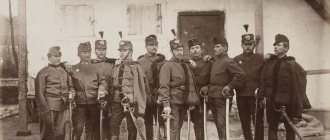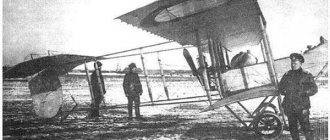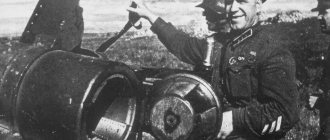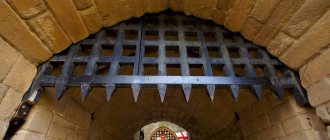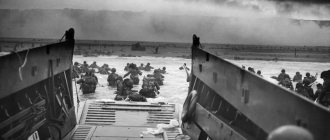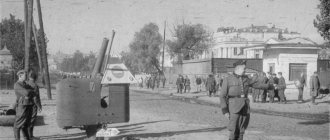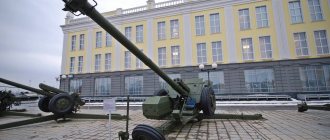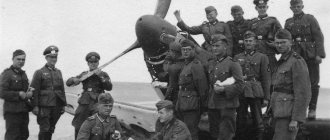Underground labyrinth
Arras, like many other cities in France, is much older than it seems.
It was founded by the Belgian tribe as Nemetocene, and after the Roman conquest of Gaul by Julius Caesar it became Atrebatum. During the Roman era, the city became a quite prosperous center, but was almost completely destroyed at the beginning of the 5th century by waves of conquerors. On the same topic
A network of underground passages was found on the island of Iturup
In the 9th century, when the city rose again, the issue of materials for new stone construction was resolved in a very original way. The townspeople began to mine stone right from under their feet!
Arras stands on layers of limestone. Adits were cut to a depth of 12 meters right under the city center. Above this depth there was a layer of flint that stopped the water, so that below the limestone was drier and stronger. From the adits, galleries went in different directions, in which blocks of stone were cut out. Gradually, an entire underground complex was formed, which over time merged with the basements of houses and shops above.
Enterprising residents began to use underground galleries as warehouses. The temperature there remained around 10 degrees all year round, although the problem was humidity, which rarely dropped below 80 percent. But visiting merchants were charged less for storage at depth than for storage in upper basements.
It’s a pity that this principle is not used in underground parking lots now.
By the 15th century, stone mining had moved to similar underground quarries outside the city. Arras grew and became richer, acquiring more and more streets of stone houses.
(Photo: Kirill Kopylov/WARHEAD.SU)
In the 19th century, the labyrinth under the city center was abandoned and forgotten. Many of its pieces began to be used as underground dumps. Under a pottery workshop and several taverns, mountains of rubbish ten meters high formed!
But with the advent of the Great War, medieval dungeons regained their relevance.
Battle of Arras (1940)
Analysis
Tank Matilda I, equipped only with a machine gun
In 1953, official British historian Lionel Ellis wrote that the attack on Arras was successful in easing German pressure on the city and delaying the encirclement of the British Expeditionary Force. The areas between Arras and Cojul were reoccupied and there was no major German attack on the city, and Rommel claimed that five divisions were attacking it just in case. Apart from the delay in the German advance and the numerous casualties inflicted on Germany, the attack was doomed to fail unless there were forces powerful enough to continue the advance and reinforce the occupied territory. Von Rundstedt, commander of Army Group A, wanted the armored divisions to rest after the fighting on 20 May. In 1978, Matthew Cooper wrote that the attack on Arras encouraged the German high command to continue its advance north to capture ports along the English Channel.[29]
The attack in the southwest was rejected and the OKH ordered Panzergruppe von Kleist
occupy Boulogne and Calais, about 80 km away.
Fearing another Allied attack, von Rundstedt ordered
Hoth's
Panzergruppe to remain in position, Reinhardt's XLI Corps sent a division east as a precaution, and Ewald von Kleist commanded the 10th Panzer Division and elements of the 1st Armored Division and 2nd Armored Division . Guderian's 19th Corps with the task of holding the bridgehead on the Somme, which slowed down the advance on Dunkirk from the very beginning. The 19th Corps attacked again at 8 a.m. on 22 May, but the German command was still held back by paralysis; Rundstedt ordered OKH instructions to be ignored and the attack on Boulogne and Calais to be postponed. About 12:40 von Rundstedt canceled his order, but the tankers waited five hours by the pajama river [30] .
Matilda I in France. You can see the driver's cramped compartment and the hatch covering the turret
In 2005, Karl-Heinz Friser wrote that Allied planning was different in that it failed to cut through the armored corridor when there were not enough German motorized divisions to consolidate behind the armored divisions, and the non-motorized divisions had several days to march from there. The Arras corridor was only 40 km wide and prone to conquest maneuvers; the allies managed to achieve a counterattack against the Clausewitzian encirclement and cut off the tanks on the banks of the canal. Halder was willing to take risks because the Allies were unable to achieve a rapid pace of operation. The Allied attack was stopped because Rommel improvised a gun line consisting of anti-tank and anti-aircraft guns, which managed to hold off some of the lighter British tanks; while infantry tanks, especially the Matilda II, proved very difficult to destroy with the standard 37 mm anti-tank gun [31].
Rommel also used wireless technology to quickly create another line of guns that could be assembled from anti-tank artillery and several 88 mm anti-aircraft guns previously located much further away, resulting in the destruction of 24 tanks on the plain between Mercatel and Tilloy. Just after 18:00, Ju 87 Stukas from Fliegerkorps I and VIII arrived, making 300 attacks on the retreating tanks by 20:30. Rommel ordered the 25th Panzer Regiment to return and cut off the British armored forces, but south of Duisan it encountered French tanks covering the British right flank and broke through only after a long and costly engagement. When German tanks broke through the British anti-tank gun line between Duisans and Warlus, the British tanks had already returned. The British attack was a disaster, and only 28 of 88 tanks returned to their original levels. The 6th Panzer Division signaled that "a strong enemy force had broken through", which alarmed Panzergruppe von Kleist
. Kleist ordered the 6th and 8th Panzer Divisions to head east to counter the Allied breakthrough. After this, the Germans regarded the Battle of Arras as a minor Allied defeat [32].
Losses
Rommel noted in his diary that his division suffered 89 killed, 116 wounded and 173 missing and captured in the first four days of operations, including the crossing of the Meuse, although 90 of the missing returned to their units [33] [34 ] . In 1953, British historian Lionel Ellis quoted the 7th Armored Division's war log as reporting losses of nine medium tanks and several light tanks, 378 killed or wounded, and 173 missing; British documents record about 400 Germans captured [29]. The British lost about 100 men killed or wounded; however, it is unknown how many French soldiers died in this battle [35]. Frankfors
lost sixty of 88 tanks in the attack on Arras [36].
Subsequent operations
The main French attack on Cambrai occurred on 22 May and, like the attack on 21 May, the forces involved were much smaller than planned. The commander of the 10th Army, General Robert Altmaier, was supposed to attack with the forces of the 5th Corps and the tanks of the Prieu Cavalry Corps, but only an infantry regiment and two depleted tank battalions were able to be assembled in time. The armored divisions moved on, leaving only small troops in Cambrai, and the marching infantry divisions would not appear until the end of the day. The French attack reached the outskirts of Cambrai, but was stopped by the Luftwaffe and forced to retreat [37].
Stop order
Matilda II in Great Britain
Friser wrote that the Franco-British counterattack at Arras had a disproportionate impact on the Germans because senior Wehrmacht commanders feared the safety of their flank. Tank commander
von Kleist
's group, General Ewald von Kleist saw a "serious threat" and reported to Colonel General.
Franz Halder (Chief of the General Staff of the Oberkommando des Heeres) that he had to wait until the crisis was resolved before continuing the attack. The commander of the 4th Army, Colonel General Günther von Kluge, with the support of von Rundstedt, ordered the tanks to be stopped. On 22 May, when the attack was repulsed, Rundstedt ordered control of Arras before von Kleist's Panzer Group
moved towards Boulogne and Calais. OKW caused further panic, and on 22 May Hitler contacted Army Group A to order all armored and motorized units to act on both sides of Arras and infantry in the east [38].
The crisis in the highest headquarters of the German army was not noticeable at the front, and Halder came to the same conclusion as Guderian; that the real danger was that the Allies would retreat too quickly to the coast and there would be a race to the ports below the channel. Guderian ordered the 2nd Panzer Division to capture Boulogne, the 1st Panzer Division to capture Calais, and the 10th Panzer Division to capture Dunkirk. Most of the British Expeditionary Force and the French 1st Army were still 100 km off the coast, but despite delays, British troops were sent from England to Boulogne and Calais in time to confront the armored divisions of the 19th Corps on 22 May . Friser wrote that if the tanks had advanced at the same speed on 21 May as on 20 May, before the halt order blocked the advance for 24 hours, Boulogne and Calais would have fallen. Without the stop at Montcorn on 15 May and 21 May, the second stop after the Battle of Arras, the final order to stop on 24 May would have been meaningless as Dunkirk would have already been captured by the 10th Panzer Division.[39]
Frontline city
The First World War came to provincial Arras in September 1914.
The city was briefly occupied by the Germans, who were driven out by French troops after stubborn street fighting. However, the Boches were driven back only a few kilometers, and the entire city was under constant artillery fire. In October and November 1914, they again stormed the city, and artillery hammered into the urban areas almost constantly.
Arras during the First World War
On the same topic
Who wins: Korean tunnels against the American military
The few civilians remaining in Arras - and after them the French soldiers - began to take refuge first in the basements, and then “rediscovered” the ancient galleries. They were completely safe in the depths of the ancient workings.
In March 1916, this section of the front was taken over by the British, who showed keen interest in the underground structures. In the first months the project was mainly exploratory, because no maps of galleries and adits in and around Arras existed. Many ancient underground structures outside the city were discovered by accident.
In the fall of 1916, a grandiose plan was born.
City under the city
In the spring of 1917, the British were to advance in the Arras area to support the French offensive in the Chemin des Dames area. As part of the preparation, British engineers proposed using new tunnels to combine the old dungeons with abandoned workings in the city center into a huge network outside the city.
(Photo: Kirill Kopylov/WARHEAD.SU)
The plan was accepted, and British, Australian and New Zealand "tunnel companies" began work. Medieval galleries and cellars were strengthened and expanded, ancient underground quarries were turned into command posts, communication centers, warehouses, workshops and barracks with kitchens and toilets.
They even built a full-fledged hospital with 700 beds underground.
In addition, telephone communications, running water and electricity appeared in the tunnels.
The total length of the old and new tunnels was more than 30 kilometers. Some of the galleries were extended to their own front line and even to the neutral zone in order to open them just before the offensive for the attacking infantry. Thanks to the titanic work of engineers underground, it was possible to walk from the crypt of the central cathedral to the very German positions without ever going to the surface and without risking your head.
(Photo: Kirill Kopylov/WARHEAD.SU)
A week before the planned offensive, two British divisions were completely hidden in the underground city. Twenty-four thousand soldiers spent a week underground (according to varying degrees of comfort) and then rushed into battle without being hit by German artillery barrages.
New weapon: Mustard gas
At the same time, a new chemical weapon was used - mustard gas, also known as “mustard gas” or “yellow cross” - this is how the Germans marked chemical shells with this gas. Mustard gas, unlike chlorine and other precursor gases, affected humans both when inhaled and when it came into contact with the skin. Now the soldiers needed full body protection.
Legendary photograph of blinded mustard gas victims. (gettyimages.co.uk)
In addition, the effect of mustard gas on the skin did not manifest itself immediately, so soldiers easily received large doses of infection. Losses from mustard gas turned out to be unexpectedly high even for the Western Front, accustomed to chemical attacks. However, against the background of general losses, losses from mustard gas seem small.
By the end of July, the Allies had made significant progress towards Pandale and crossed the Isère River. But the battle plan was already falling apart. Yes, the Germans suffered heavy casualties, but they retained their artillery and, retreating, removing the main forces from the attack, they held the front and did not allow the troops to be destroyed.
Battlefield, autumn 1917. (abc.net)
Since July 31, the Entente has been hitting the German defenses, trying to find gaps in it. Four offensives were organized. Heavy artillery fire alternated with infantry attacks. At least the Germans counterattacked and fought off the British. The opponents clashed in a positional struggle, and the battle fell apart into many small battles in a labyrinth of trenches. German counterattacks and chemical warfare are commonplace in this war. What was new was a huge amount of dirt.
Museums
These underground structures were used until the very end of the First World War, and then into the Second. Almost the entire population of the city, along with the German garrison, took refuge in them from raids. Then the tunnels were forgotten again.
They began to be actively encountered again at the end of the 20th century - due to the laying of communications and underground construction. The Arras city administration partially turned them into museums. The medieval tunnels can be visited directly from the city center, and those built by New Zealanders in 1916–1917 can be visited by walking ten minutes from the center. Inside, even “cave paintings” of bored soldiers and traces of candles from a makeshift chapel, where Easter was celebrated just before the offensive, were preserved.
(Photo: Kirill Kopylov/WARHEAD.SU)
If you are in this city, be sure to go and see the impressive work of many generations.

